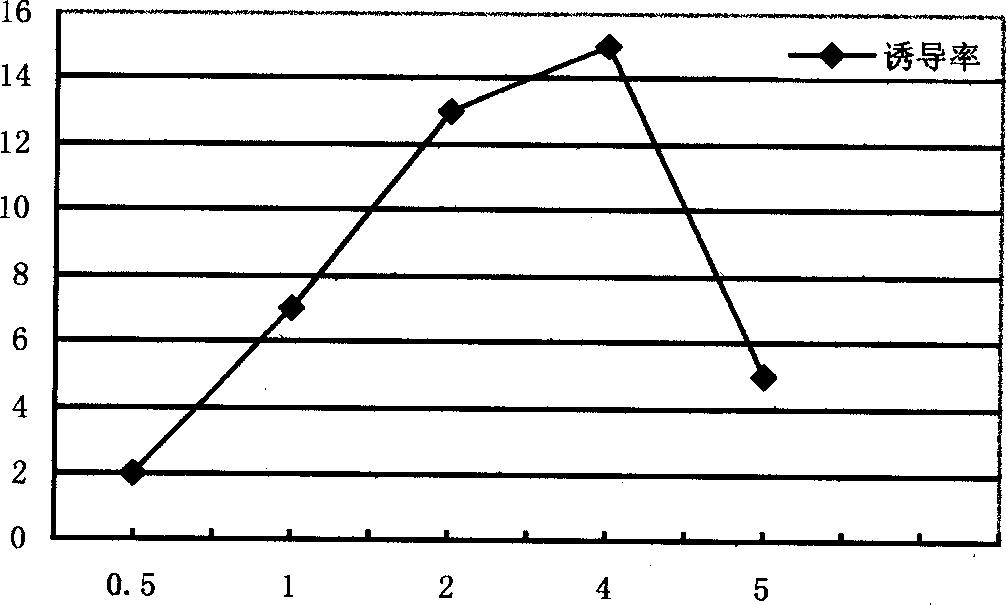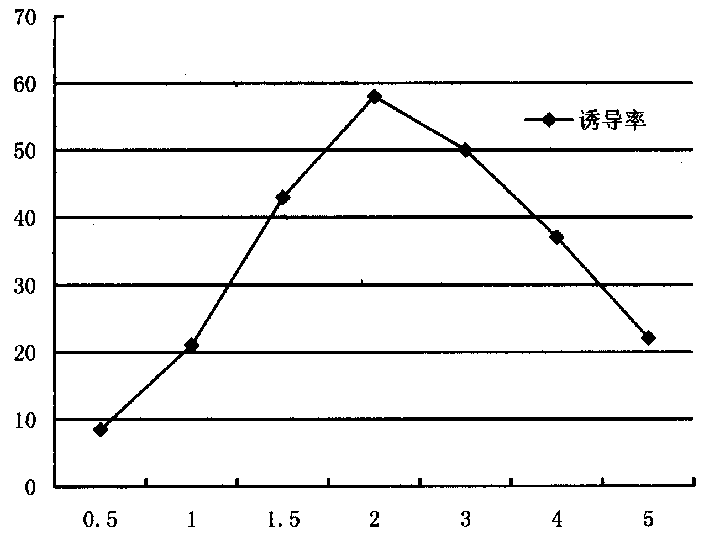Somatic embryogenesis and plant regeneration technology for hybridized Chinese tuliptree
A technology of hybrid tulip tree and embryogenesis, applied in plant regeneration, botanical equipment and methods, horticulture, etc., can solve the problems that have not yet been published with a complete set of technology for hybrid tulip tree cells and embryos
- Summary
- Abstract
- Description
- Claims
- Application Information
AI Technical Summary
Problems solved by technology
Method used
Image
Examples
Embodiment Construction
[0123] The following are typical embodiments of the invention:
[0124] 1. Use immature zygotic embryos to induce embryogenic callus. Artificially pollinate in spring, collect aggregated samara in midsummer, refrigerate the collected aggregated samara at 4°C for 4 to 6 days, cut open and cut off the wings. Wash the seeds with detergent to remove the oil on the surface, rinse with tap water for 30 minutes, rinse with distilled water for 3 times, process with 75% ethanol for 20 seconds, use 0.1% mercuric chloride for 4 minutes and 30 seconds, and rinse with sterile water for 4 times. Under sterile conditions, the seed coat was peeled off, and the immature embryos were inserted into the induction medium.
[0125] 1 / 2MS medium was used in the stage of embryogenic callus induction, and the concentrations of additional hormones were 2, 4-D 0.5, 1.0, 1.5, 2.0, 3.0, 4.0, 5.0 mg / L, 6-BA 0, 0.1, 0.2, 0.4, 0.5mg / L. Add 500-1000mg / L natural compound hydrolyzed casein. Vitamin C 5mg / L,...
PUM
 Login to View More
Login to View More Abstract
Description
Claims
Application Information
 Login to View More
Login to View More - R&D
- Intellectual Property
- Life Sciences
- Materials
- Tech Scout
- Unparalleled Data Quality
- Higher Quality Content
- 60% Fewer Hallucinations
Browse by: Latest US Patents, China's latest patents, Technical Efficacy Thesaurus, Application Domain, Technology Topic, Popular Technical Reports.
© 2025 PatSnap. All rights reserved.Legal|Privacy policy|Modern Slavery Act Transparency Statement|Sitemap|About US| Contact US: help@patsnap.com



